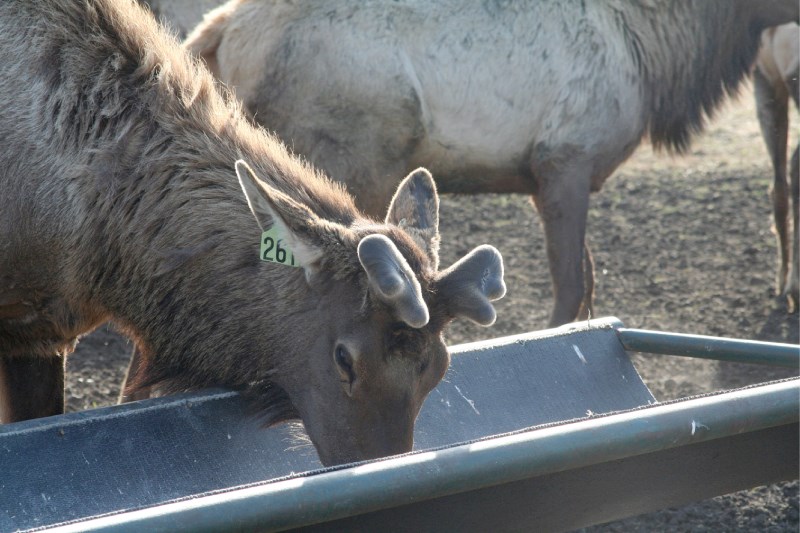Despite challenges for agricultural producers, Maurice Campeau says farming is the perfect occupation.
“It's a lifestyle, it's not a job,” he says. “Everyday is an adventure.”
For Campeau, that adventure includes working with unusual livestock. Maurice and Ernie Campeau started elk farming in 1998.
Ernie says the biggest challenge is finding markets for elk meat and velvet. The fluctuating price for products presents a constant challenge to area elk farmers.
“One day it's up and the next day its down,” Ernie says. He adds that although the markets fluctuate significantly, he is optimistic this could be a better year for elk farmers. Mad cow disease affected elk operations as countries closed doors to Canadian livestock products.
“It's a very efficient animal to raise,” Maurice says.
The elk eat silage, blended in “a process similar to making wine,” Maurice says. They use the bale wrapping method, which ferments and keeps the hay moist, a process similar to “canning sauerkraut.”
Elk farming started to be introduced in Alberta 25 years ago.
Harvesting velvet from elk antlers is no easy process either. The Campeau brothers supported the introduction of a certification course for velvet producers to assure buyers the product is harvested humanely.
The velvet is sold mainly to Korean and Chinese markets, which use the product for medicinal and health purposes. The product can help pet arthritis. It can also be used as an aphrodisiac, or to help repair broken bones. Athletes use it to improve endurance.
“If those antlers grow in 70 days…if it grows that fast there must be something in there,” says Maurice, reflecting on the Chinese market for elk velvet health products.
A male elk's antlers can grow up to 50 pounds in a season at its most productive age. The average amount is closer to 25 or 30 pounds in a season.
Elk are in general a docile animal but can become territorial in the fall rutting season.
All the elk are certified and traced from birth to the processing plant in Fort Macleod. Ernie says it's a good thing but that it can be challenging.
The Campeau brothers have farmed both deer and dairy cows, but say raising elk was the right choice.



